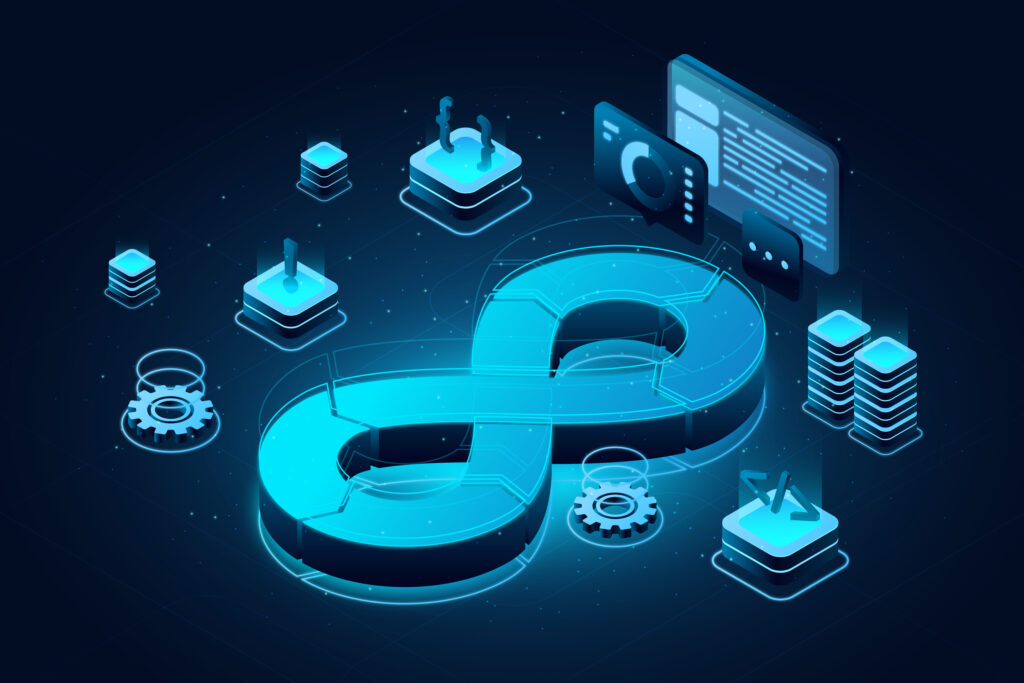Understanding What is DevSecOps and How Does It Work is crucial for enhancing your software development, security, and operations.
What is DevSecOps and How Does It Work combines “development,” “security,” and “operations,” emphasizing shared responsibility for security in software development. In DevSecOps, developers write code, security experts defend against attacks, and operations handle release and maintenance.
What is DevSecOps and How Does It Work is a security-focused approach that integrates security principles in the software development lifecycle (SDLC), building on DevOps’ automation and teamwork. The entire team, not just security professionals, shares the responsibility for maintaining security standards. What is DevSecOps and How Does It Work fundamentally strengthens software by establishing a security-valued culture during development and operation.
It operates by infusing security into DevOps, integrating security assessments throughout the Continuous Integration/Continuous Deployment (CI/CD) process. This ensures a shared responsibility among all team members from developers to operations.
Here’s a breakdown of What is DevSecOps and How Does It Work with your team in the software development lifecycle (SDLC):
Plan:
The planning phase of What is DevSecOps and How Does It Work involves collaboration, discussion, and strategy development for security analysis. Teams work together to identify security requirements, assess potential risks, and define security policies and procedures for the project.
Code:
Before they begin writing any code, developers speak with the safety team. They make sure to consist of protection rules and practices proper from the beginning, so protection is taken into consideration throughout the entire improvement technique.
Build:
The build phase automates code compilation and packaging. The CI/CD pipeline includes security measures such as code analysis tools and vulnerability scanners that automatically scan code for vulnerabilities.
Test:
During the testing phase, automated security tests are carried out alongside functional tests. To uncover security vulnerabilities and flaws in code, tools such as static application security testing (SAST) and dynamic application security testing (DAST) are utilized.
Release:
Security audits are carried out in the release phase to make sure the program satisfies security standards prior to deployment. The program is ready for production deployment if any security flaws found during testing are fixed.
Deploy:
In the deployment phase, the software is deployed to production environments. Automated deployment tools and techniques are used to ensure that the deployment process is secure and reliable.
Operation:
After the software is launched, it moves into the operational phase. Continuous monitoring and logging are essential components of What is DevSecOps and How Does It Work allowing teams to detect and respond to security incidents in real time. Automated monitoring tools provide visibility into the security status of applications and infrastructure, enabling teams to identify and address security threats promptly.
Following What is DevSecOps and How Does It Work integrating security practices into every stage of the SDLC enables effective adoption. Collaboration, automation, and shared responsibility for security are key principles of What is DevSecOps and How Does It Work enabling organizations to build and maintain secure, resilient software systems.
Benefits of DevSecOp
Early Detection and Mitigation of Vulnerabilities:
DevSecOps ensures security is a top priority in the course of software program improvement. Automated scans and continuous checking out quickly perceived vulnerabilities, like the usage of SAST and DAST gear. Fixing these early reduces dangers and avoids high-priced breaches in a while.
Faster and Secure Development Lifecycle:
DevSecOps hastens improvement by seamlessly integrating security evaluations. Automated tools permit the developer’s attention to coding at the same time as meeting security requirements. This speeds up product releases, keeping competitiveness and strong security.
Improved Collaboration:
DevSecOps encourages teamwork between operations, safety, and improvement teams. Collaboration breaks down silos, sharing insights and pleasant practices. Communication gear aids brief difficult decisions, fostering a protection-targeted lifestyle.
Continuous Monitoring:
DevSecOps platforms provide continuous tracking and detection of safety threats in real-time. Automated equipment examines records from diverse sources, alerting groups to ability incidents without delay. Quick response minimizes the effect on the organization.
Automated Compliance and Auditing:
DevSecOps automates compliance assessments and auditing, ensuring adherence to requirements. Automated checks keep consistency and decrease the risk of non-compliance. Auditing gear creates complete audit trails, strengthening security features.
The shift from Reactive to Proactive Security:
DevSecOps promotes a proactive technique, figuring out and mitigating risks before they’re exploited. Proactive measures like danger modeling and safety schooling ensure resilience in opposition to evolving threats, decreasing breach risks.
Enhanced Code Quality:
DevSecOps emphasizes high code high-quality through security-targeted practices. Early vulnerability fixes cause fewer defects and accelerated stability. Prioritizing protection along different satisfactory metrics guarantees dependable software.
Reduced Remediation Costs:
DevSecOps minimizes expenses by way of detecting and addressing vulnerabilities early. Prompt responses to incidents mitigate harm and disruption. Proactive safety investment avoids the high-priced repercussions of breaches.
Cultural Transformation:
DevSecOps instills a subculture of protection awareness and shared obligation. Training and focus tasks teach the workforce on first-rate practices, fostering a safety-conscious group of workers. Embedding safety within the organizational way of life maintains a sturdy protection posture.
Continuous Improvement:
DevSecOps encourages non-stop improvement via feedback loops and gaining knowledge of opportunities. Post-mortems and analyses power refinement of security practices. Adaptation to evolving threats ensures safety features stay powerful.
Risk Reduction:
DevSecOps considerably reduces the risk of breaches and their impact. Integrating security early within the development lifecycle identifies and mitigates risks, and defensive assets and keeps operational integrity.
Organizations could better comprehend the importance of giving security a top priority at every level of the SDLC by learning What is DevSecOps and How Does It Work. We started on a quest to understand the core ideas and procedures of DevSecOps, shedding light on how it protects software against new threats and maintains the integrity of digital assets.
FAQ
1. What exactly is DevSecOps and how does it differ from traditional software development practices?
DevSecOps integrates security practices into the software development lifecycle, ensuring security is a shared responsibility from planning to deployment. Unlike traditional practices, it prioritizes security throughout the development process.
2. How does DevSecOps improve software security compared to traditional security approaches?
DevSecOps improves software security by incorporating security measures at every stage of development. This includes automated testing, continuous monitoring, and proactive risk management, reducing the risk of security breaches.
3. What are some key principles of DevSecOps, and how do they contribute to a more secure software development process?
Key principles include collaboration, automation, and shared responsibility. Collaboration ensures communication among teams, automation streamlines processes, and shared responsibility ensures everyone is accountable for security.
4. How can organizations implement DevSecOps practices effectively within their development teams?
Organizations can implement DevSecOps by fostering a security-aware culture, providing training, integrating security tools, and gradually introducing DevSecOps practices through pilot projects.
5. What are some common challenges organizations face when transitioning to DevSecOps, and how can they overcome them?
Challenges include resistance to change, lack of security expertise, and integration difficulties. Organizations can overcome these by building security skills, starting with small projects, and fostering open communication among team members.










